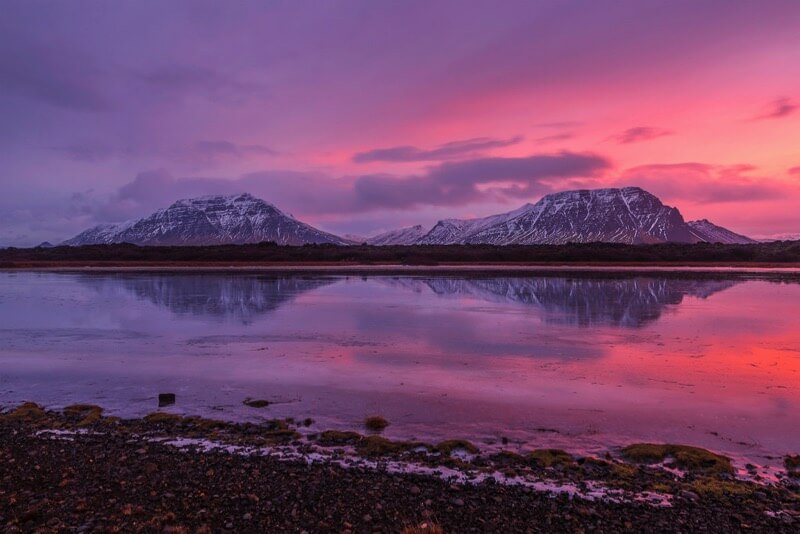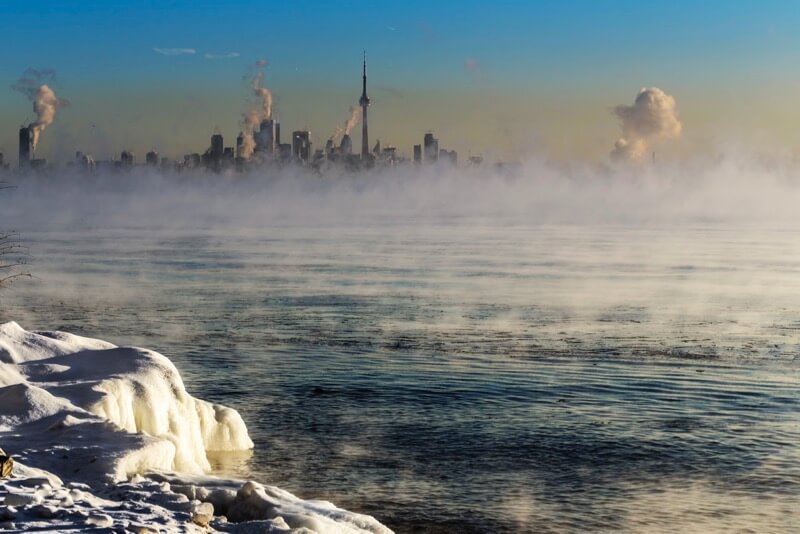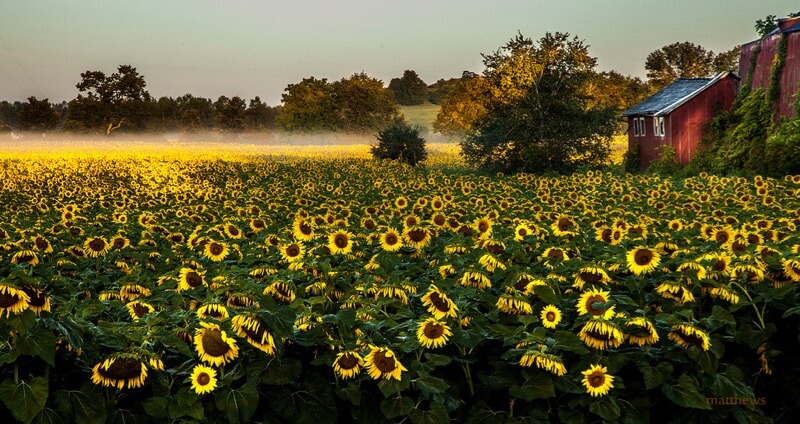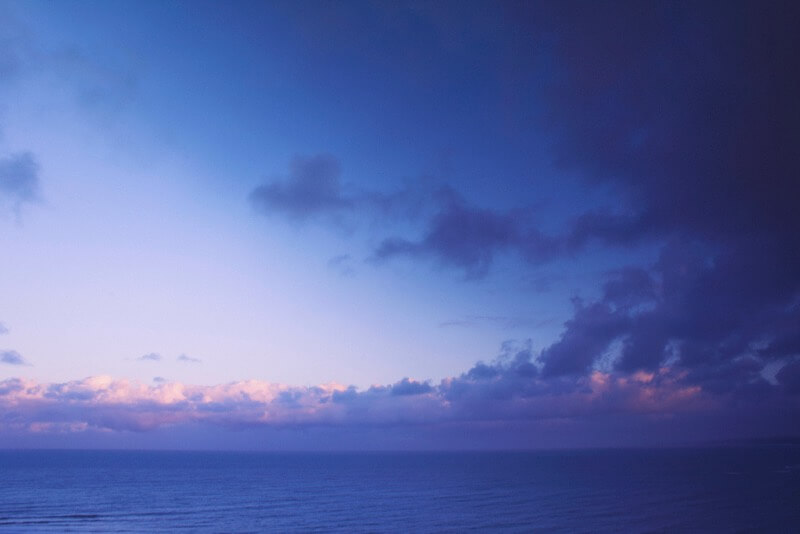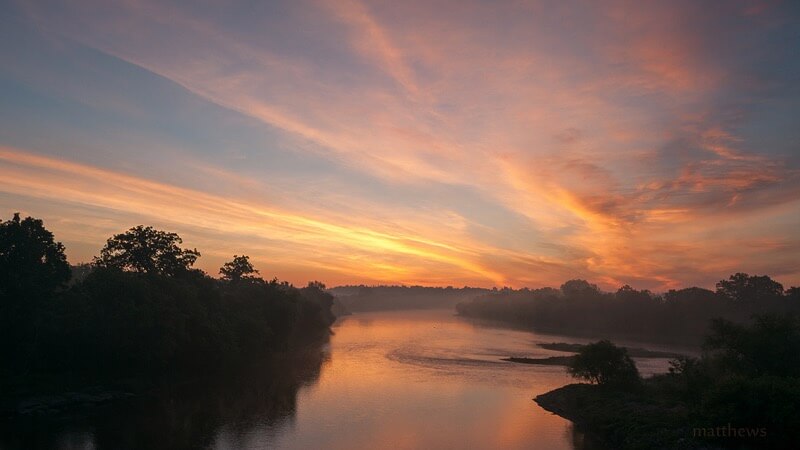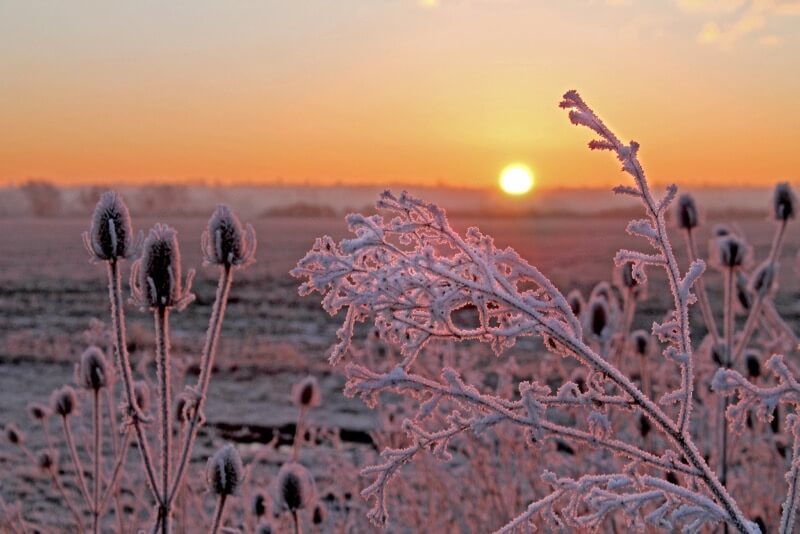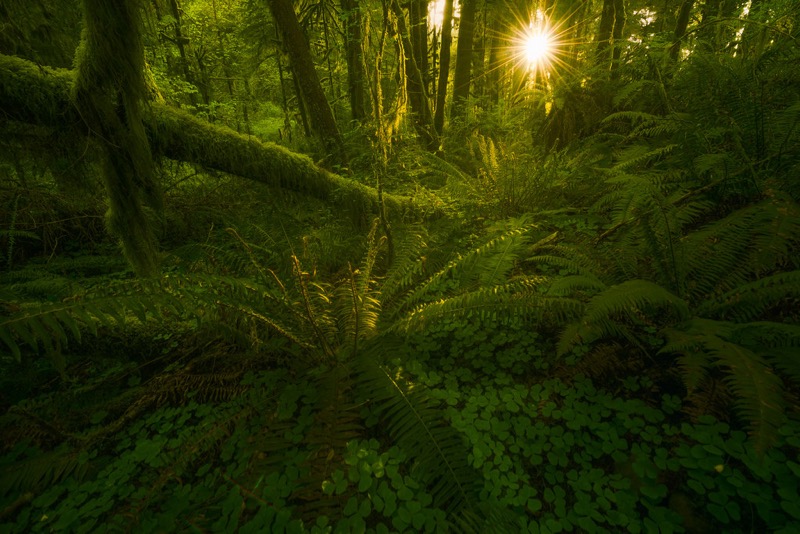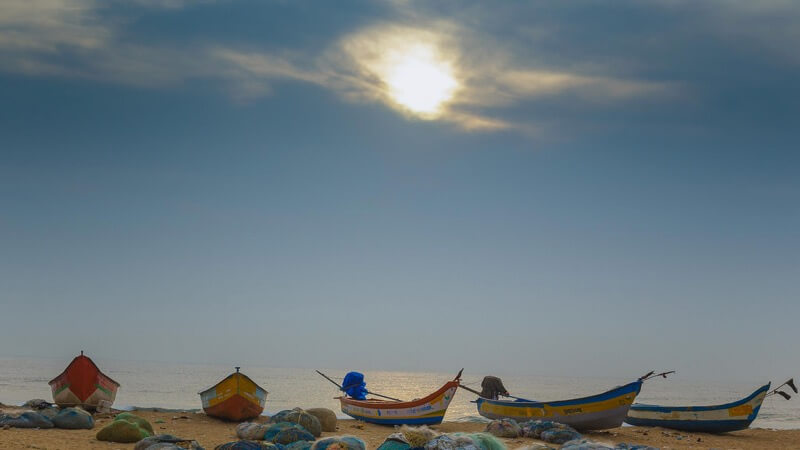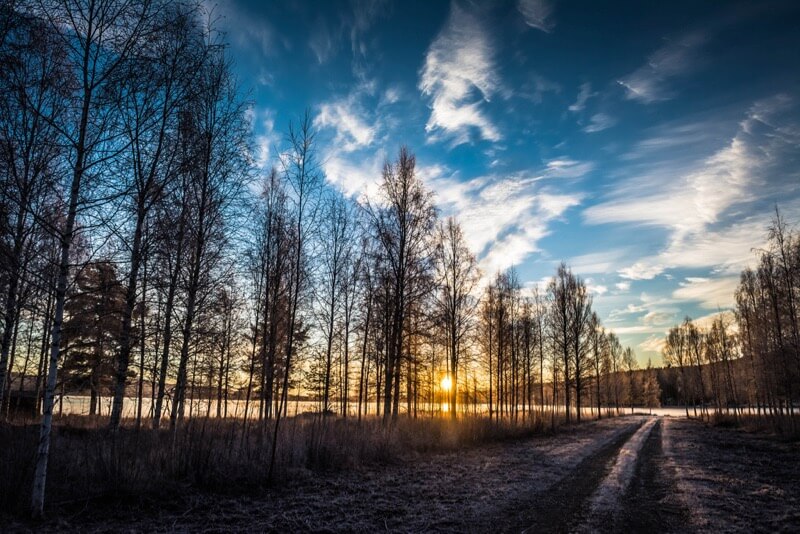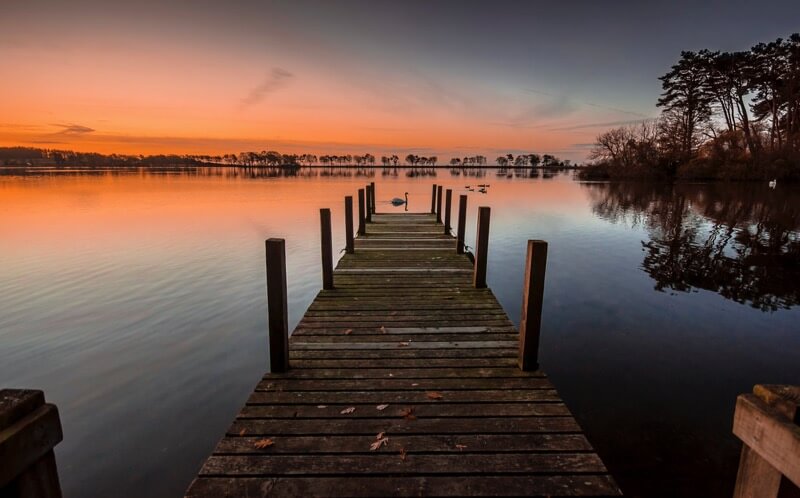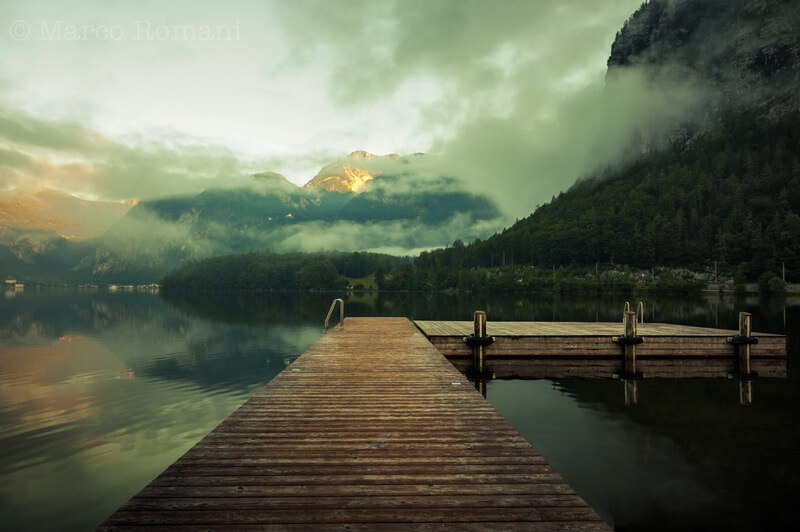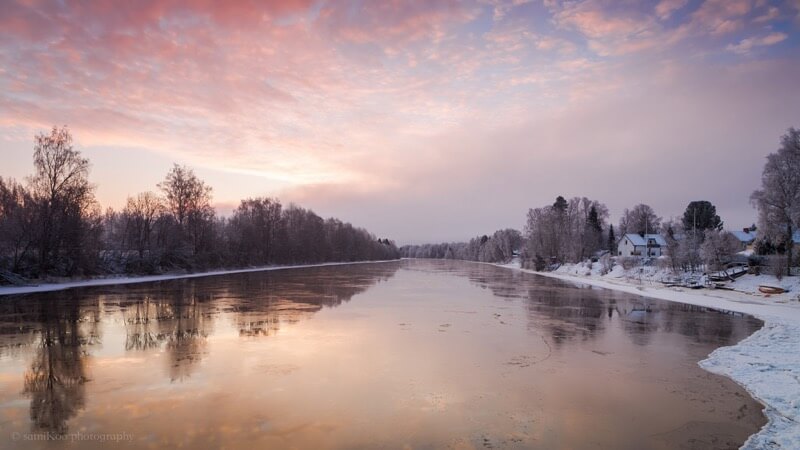Sunsets and sunrises are both gorgeous for photography, but they’re not entirely the same. While they look similar, they have key differences that can change the color and mood of photos.
One of the main differences is the color temperature of the light. Sunrises tend to be cooler, while sunsets are warmer. This difference is caused by the number of particles in the air. When there are more particles, cooler shades like blue and violet are blocked because they have shorter wavelengths. Warmer shades like red and orange still pass through because they have longer wavelengths.
Since particles like pollution and dust rise during the day’s heat, sunsets often have warm colors. The particles then settle during the night, making sunrises cooler. Sunrises can still be warm, though, if there’s a storm on the horizon or high pollution in the area.
(To see the subtle difference in color between sunsets and sunrises, compare these 52 examples of sunset photography with the sunrise photos below.)
juli juli – Sunrise on Ganga river. Assi ghat. Varanasi
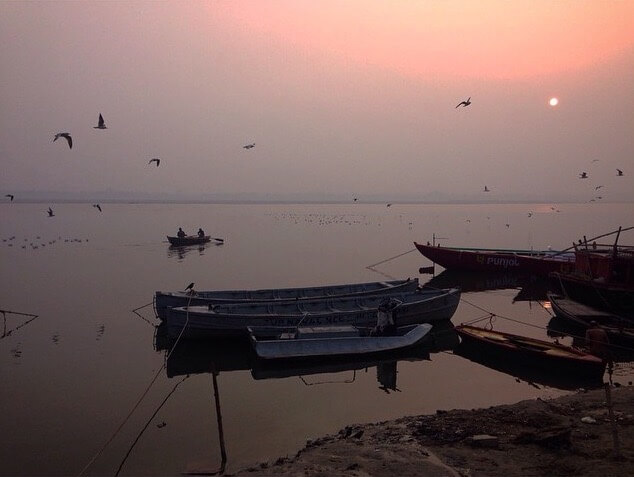
Another difference between sunrise and sunset photos is the atmosphere. Since fewer people are outside in the early morning, sunrise photos tend to look more peaceful or solitary than sunset photos. Popular places like beaches can be crowded throughout the day and evening, yet empty in the morning.
This solitude allows for more possibilities, like HDR or long exposures. You can create any composition you want. You don’t have to work around a crowd of people or wait for strangers to move out of the way to get a good shot.
Of course, not all locations work well with sunrises. If a beach is facing west, for instance, you might get better shots during sunset. Some locations like state parks don’t open until after sunrise, either.
Ken Lane – Pisgah Inn Sun Rays (Blue Ridge Parkway)
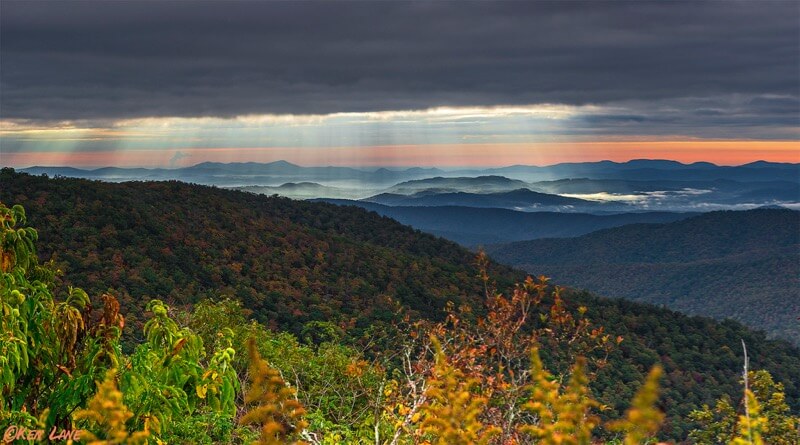
Despite their differences in color temperature and atmosphere, sunsets and sunrises require the same shooting techniques and preparation. If you’re experienced at shooting sunsets, you should have no problem getting great photos of a sunrise. Your biggest challenge might simply be getting up early. Nevertheless, here are a few tips for getting good shots of both.
Research the location.
Some places look better during sunrise/sunset than others. Anywhere with a clear horizon or panoramic view generally works well. Ideally, you want to face east for sunrise and west for sunset, but north or south could also be beautiful. It just depends on the time of year and the scene you’re shooting.
Researching your location also gives you time to plan your composition. While you could certainly get good shots with a spontaneous, wait-and-see approach, you’ll be more sure of success if you have a plan. After all, sunrises and sunsets don’t last long. If your location or composition isn’t working, you won’t have much time to change strategies. Every minute you spend hiking or driving somewhere else is a minute you lose photographing the changes in color and light.
Choose your technique and gear.
Similar to planning your composition, it’s a good idea to know what technique(s) you’ll be using and what gear you’ll need for your shots. Will you use HDR? Take along a graduated ND filter? What kind of lens do you need?
Even if you’re taking along everything you have, this general plan gives you a direction and time to think about potential problems. You’ll thank yourself later, when you’re sleepily waiting for the sun to rise at 6am, sipping a cup of coffee instead of debating over different lenses.
Check the weather and sunrise/sunset times.
Bad weather doesn’t necessarily mean bad sunrises/sunsets. In fact, if a storm is approaching or has recently ended, you could get spectacular colors and dramatic views of the storm clouds. At the same time, though, you don’t want to get stuck in a hail storm or other extreme weather.
When you’re checking the sunrise/sunset times, plan to arrive a good hour beforehand and, if possible, to stay longer afterward. This will give you a chance to capture both Golden Hour and Blue Hour, which can be as stunning as the sunrise/sunset itself.
Greg David – What a way to start the day Toronto!
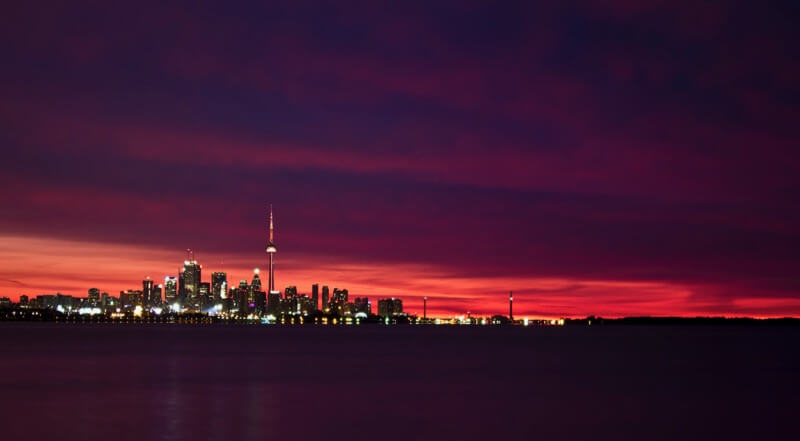
Bring a tripod.
Sunrises and sunsets are low-light situations, so you’ll need to stabilize your camera as much as possible to maximize sharpness and minimize noise. If you can’t take along a tripod for whatever reason, find a solid base that can hold your camera steady. A firm rock, bench, or picnic table could all work. They’re not as convenient as a tripod, but they’ll allow you to use a lower ISO and a smaller aperture for sharp, clean images.
Vary your shots.
Once you’ve nailed the photo you’d hoped for, take time to experiment with other ideas. Play around with different angles and subjects. Look around for something that catches your eye, perhaps something you didn’t expect. There are hundreds of ways to shoot a sunrise or sunset. For inspiration, check out the following photos of sunrises selected from our fantastic community on Flickr.
Sunrises with Fog and Mist
Fog and mist form when water vapor in the air cools quickly, turning from gas into tiny droplets. Since night is cooler than the day, low mist and fog are more likely to be present during sunrise than sunset. They’re especially common above cold water. You can shoot this phenomenon from a distance–from a mountaintop, for example–or wade right in for moody, close-up shots.
Robert Felton – More From Dovecote
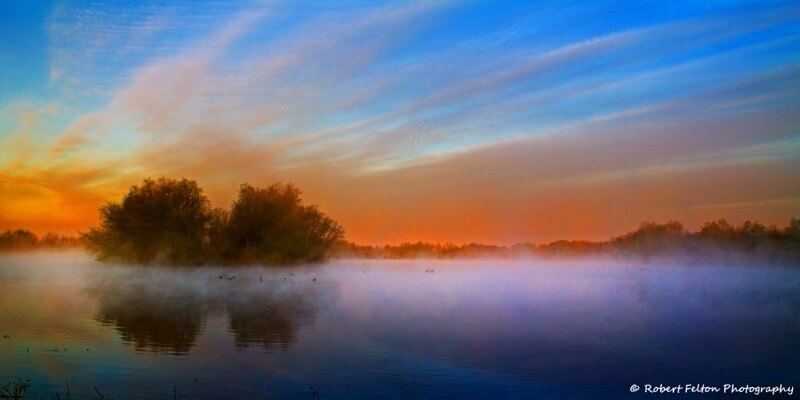
Yegor Malinovskii – Ram’s Glitter and Gold
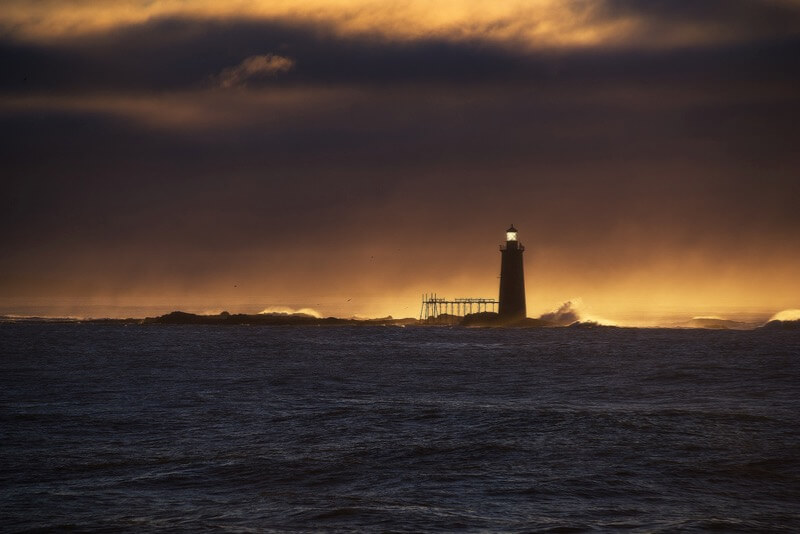
Marco Bergner – exmor in the fog
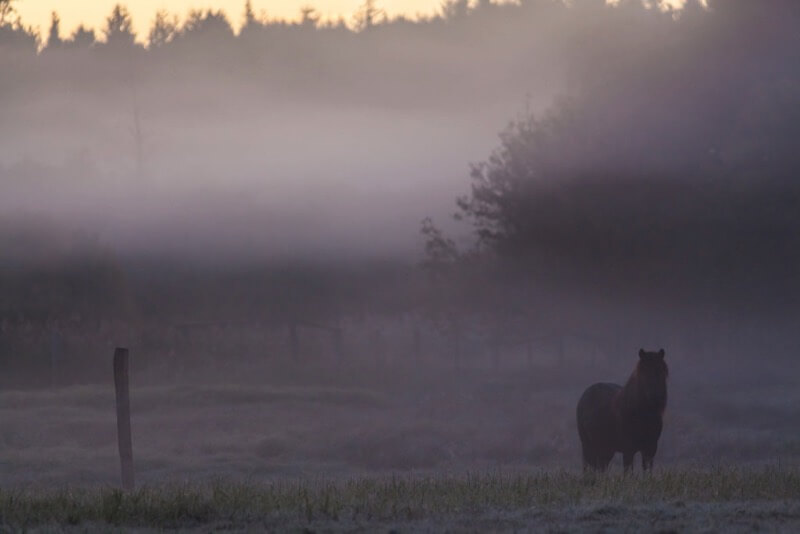
Carina – Morning in the Swedish fields
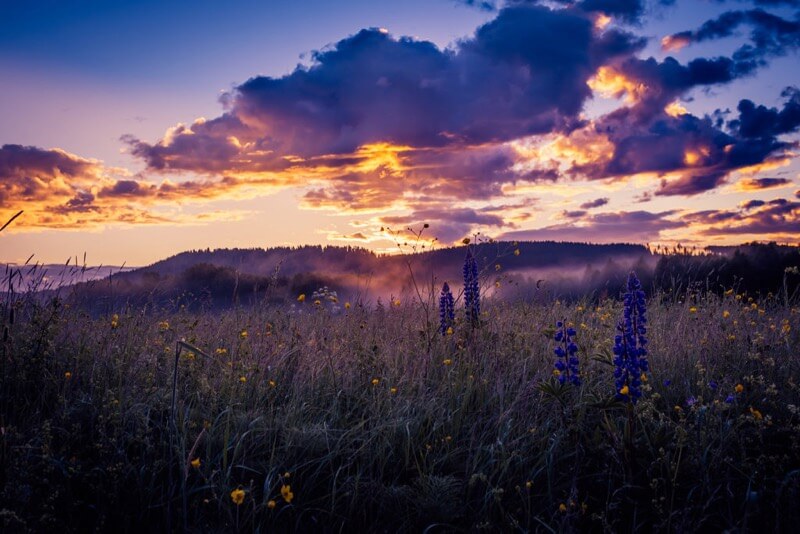
Desiree Elaine – Morning geese

Marco Bergner – Moorstimmung IV
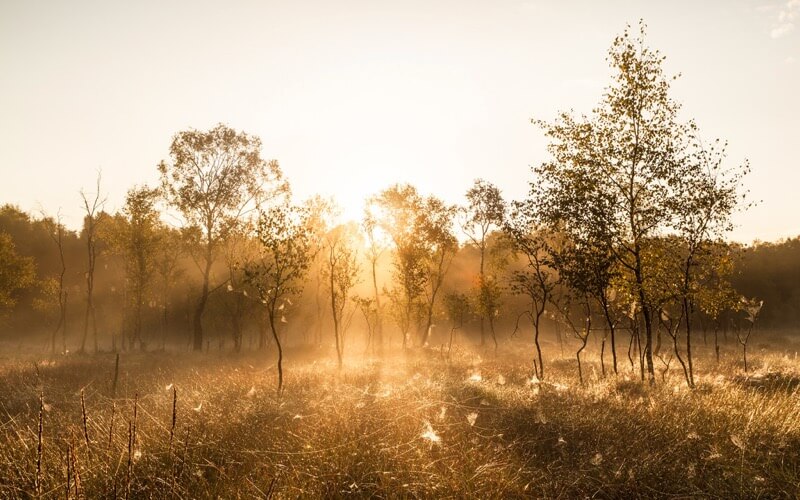
Between Blue Hour and Sunrise
If you manage to get up early enough, you’ll be rewarded by the beauty of Blue Hour. But even if you arrive just before sunrise, you can catch the last couple minutes of Blue Hour, as it drifts into the brighter colors of day.
Caitlín Keller – you can’t take the sky from me
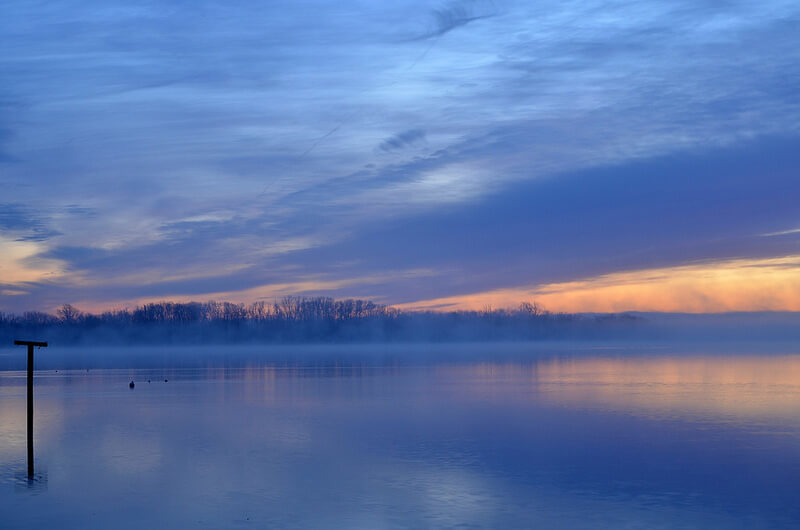
Denise Worden – Black Gives Way To Blue
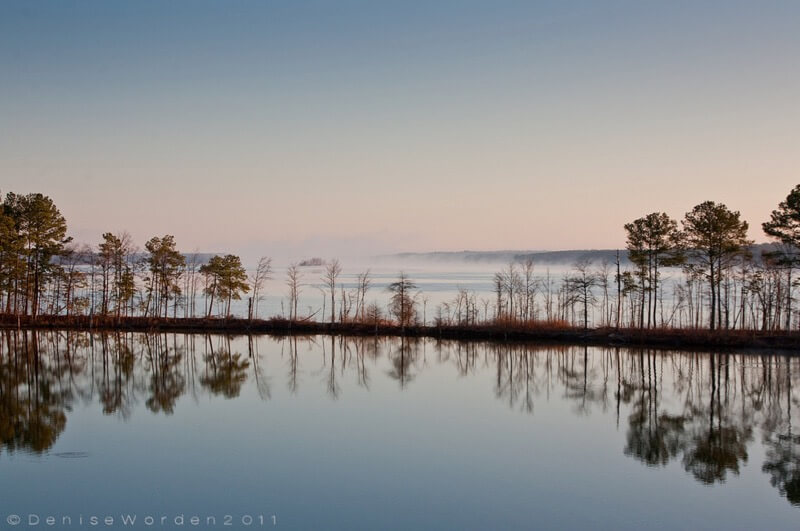
Arthur Lee – Sunrise at Penang Jetty
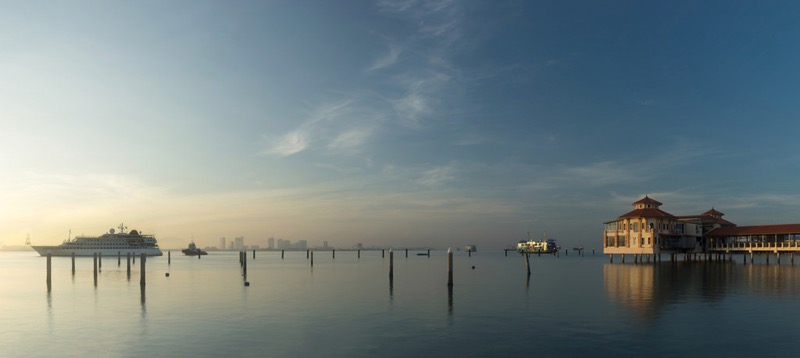
Yegor Malinovskii – Perfectly Lonely
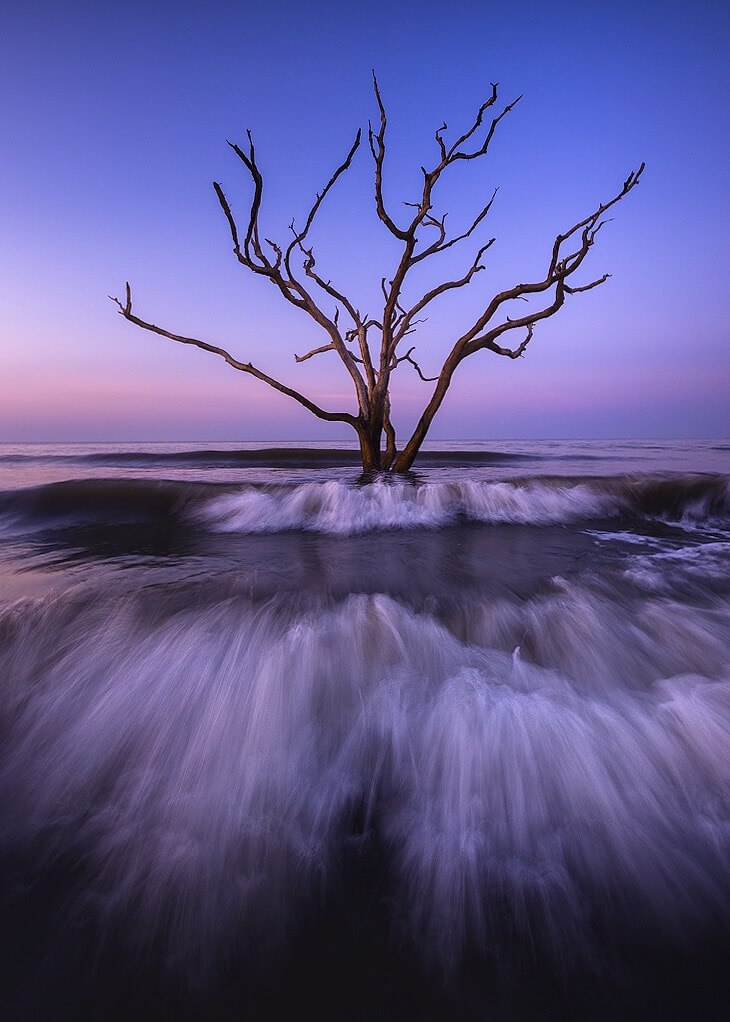
Greg David – Across the lake this morning
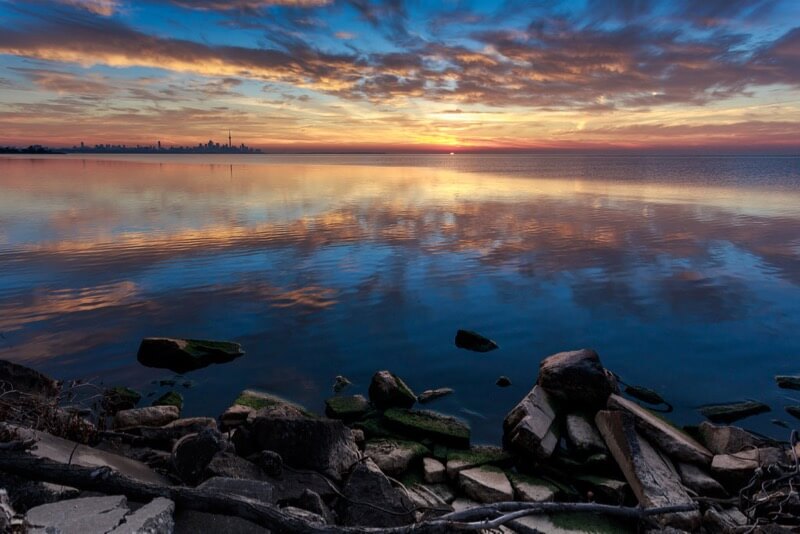
les matthews – Burlington Pier
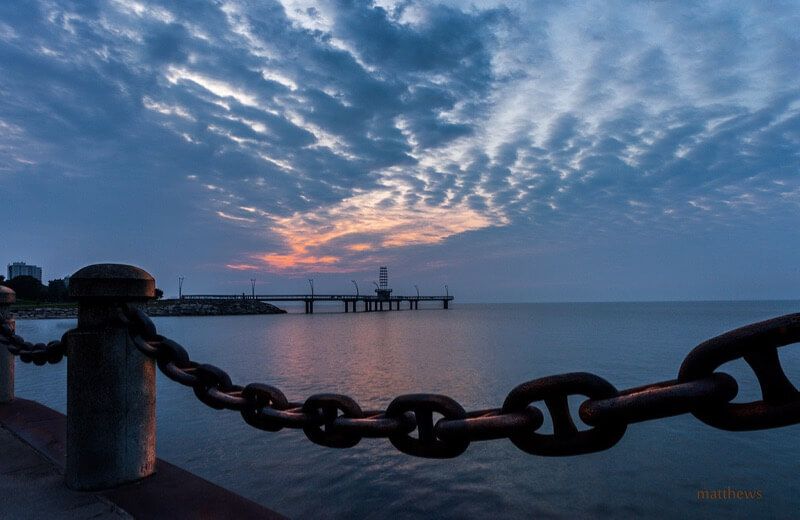
Denise Worden – First Light II
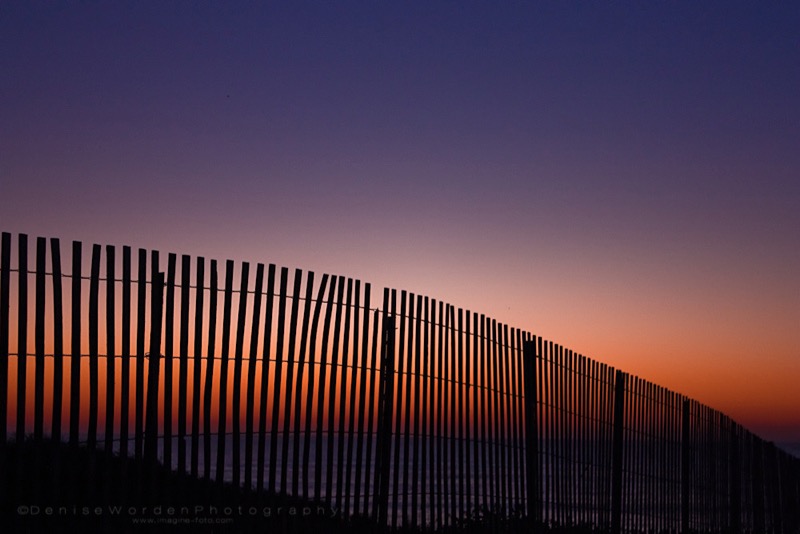
Facing the Sun
A lot of photographers start a sunrise shoot by facing the sun. This is a natural choice, as the rising sun creates dramatic changes in color and light. The scenery around the the sun transforms every minute. You can leave your camera in the same spot and still get widely varying photos.
You can also get fantastic shots of sun flares by facing the sun. You can catch these sun flares right above the horizon or wait until the sun is high enough to shine through the trees. Depending on your aperture, the sun flares will be either softly diffused or boldly defined. For soft sun flares, aim for a wide aperture, such as f/5.6. For bold flares, use a smaller aperture, such as f/22.
Robert Felton – Another Day Another Sky
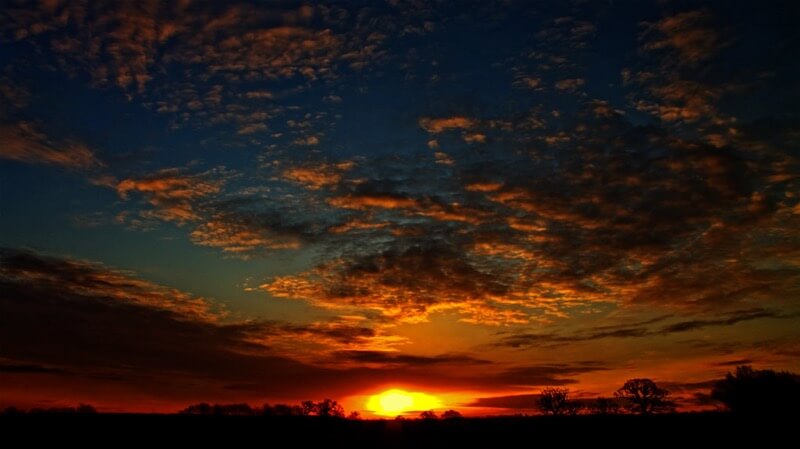
Robert Felton – Greensand Ridge Flare
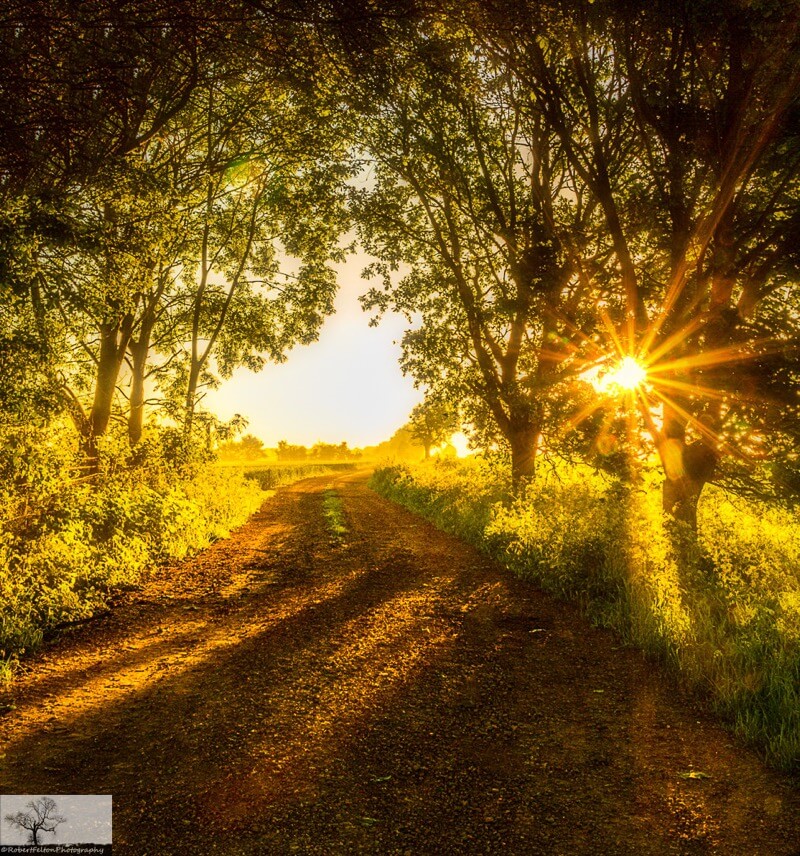
Shirren Lim – .temple and the sun.
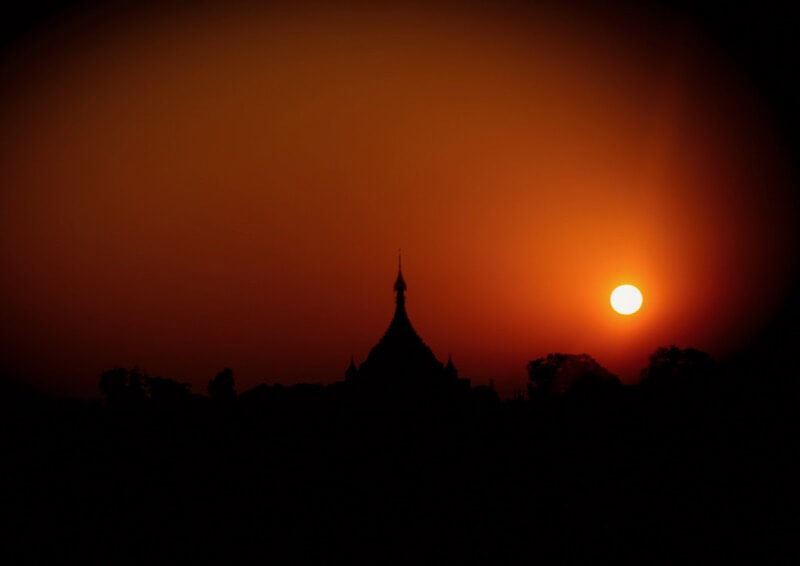
Shamini – Watching A Beautiful Sunrise
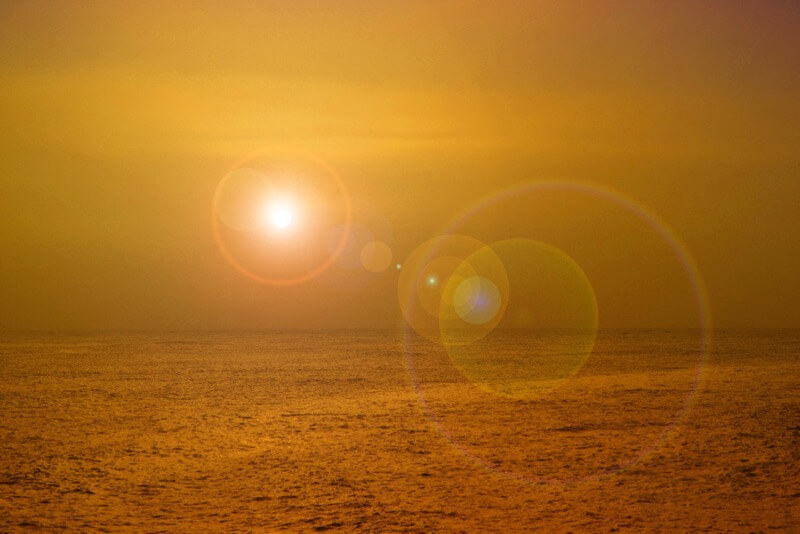
Ahmad Syukaery – Sunrise at Poto Tano, Sumbawa
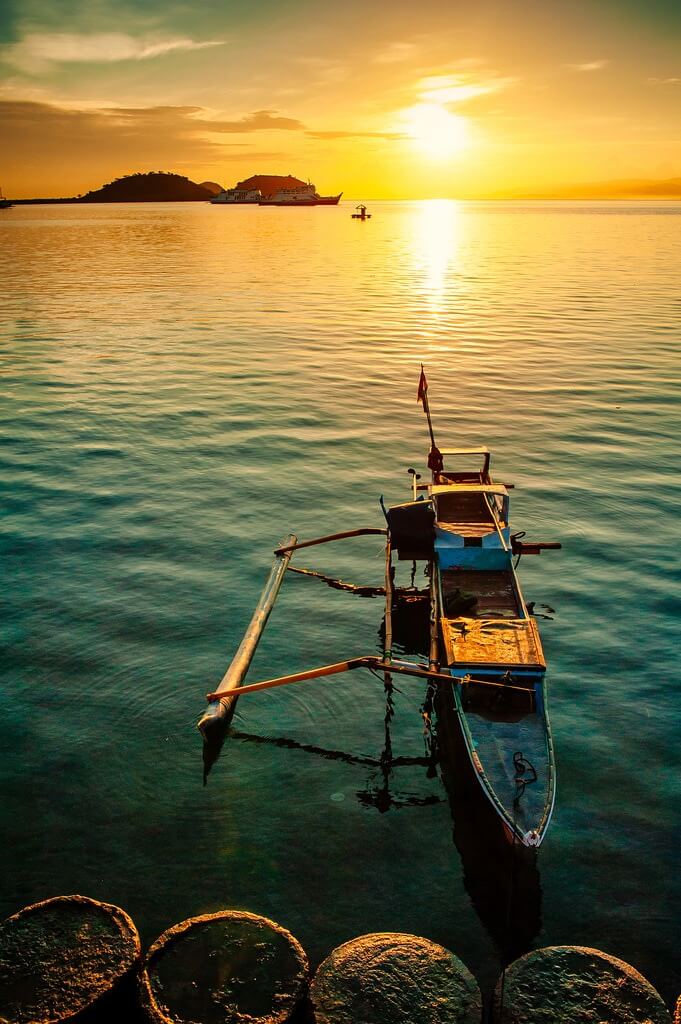
ilirjan rrumbullaku – Sun Rises Over Mt. Hood
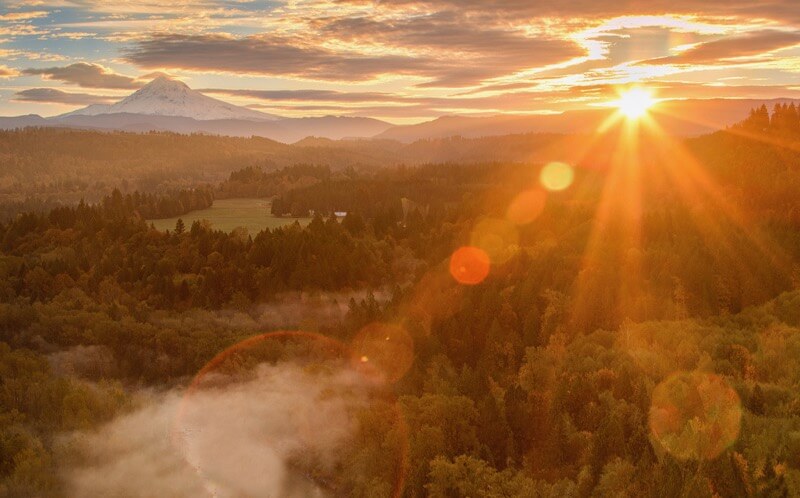
Other Subjects During Sunrise
Although the sun is a gorgeous subject, don’t forget to look around you for other subjects that are worth capturing. The soft light and colors of sunrise make everything more beautiful and striking. From distant mountains to empty boats on serene water, you may end up loving these “side” shots more than the sunrise itself.
Tenia Prokalamou – “Great minds discuss ideas; average minds discuss events; small minds discuss people” —Eleanor Roosevelt
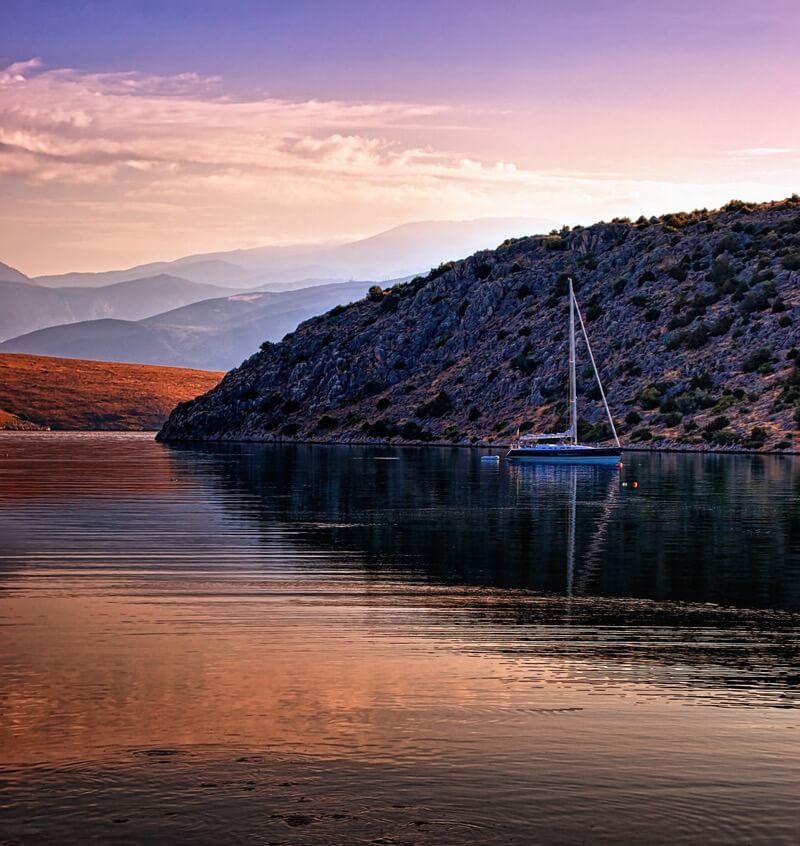
Wilson Silva – At sunrise foxtail
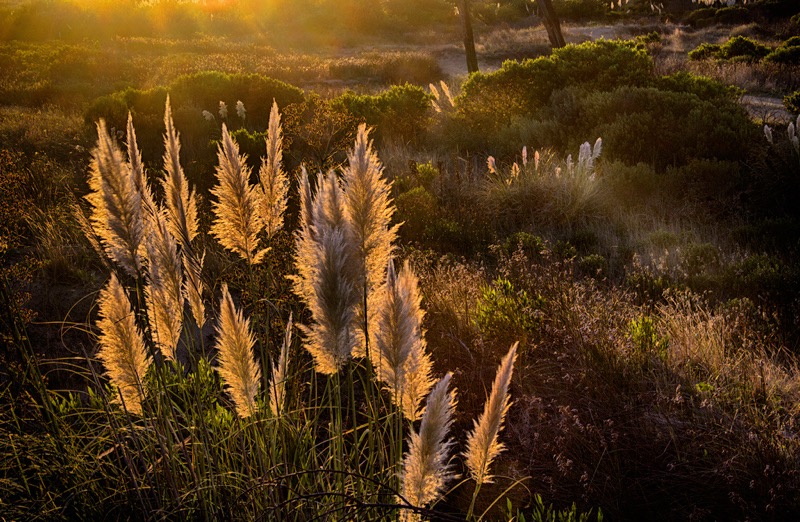
Tenia Prokalamou – Unforgettable Moments

Tenia Prokalamou – A typical morning
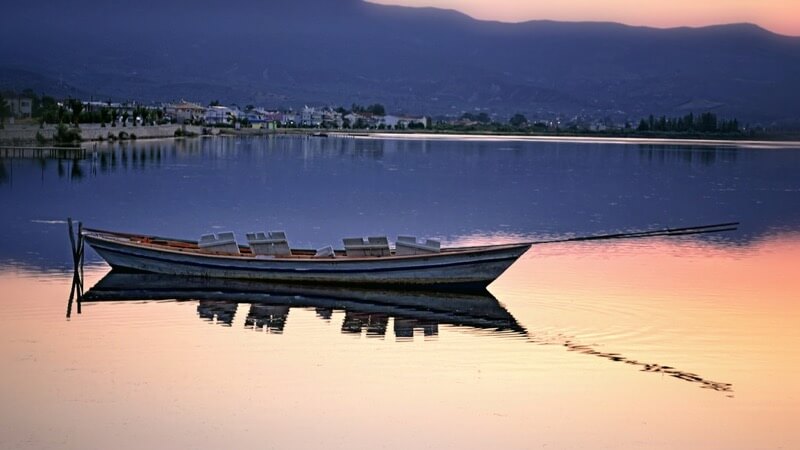
Robert Felton – Swan Silhouette

PRADEEP RAJA K – Twin mountain Iceland Sunrise
